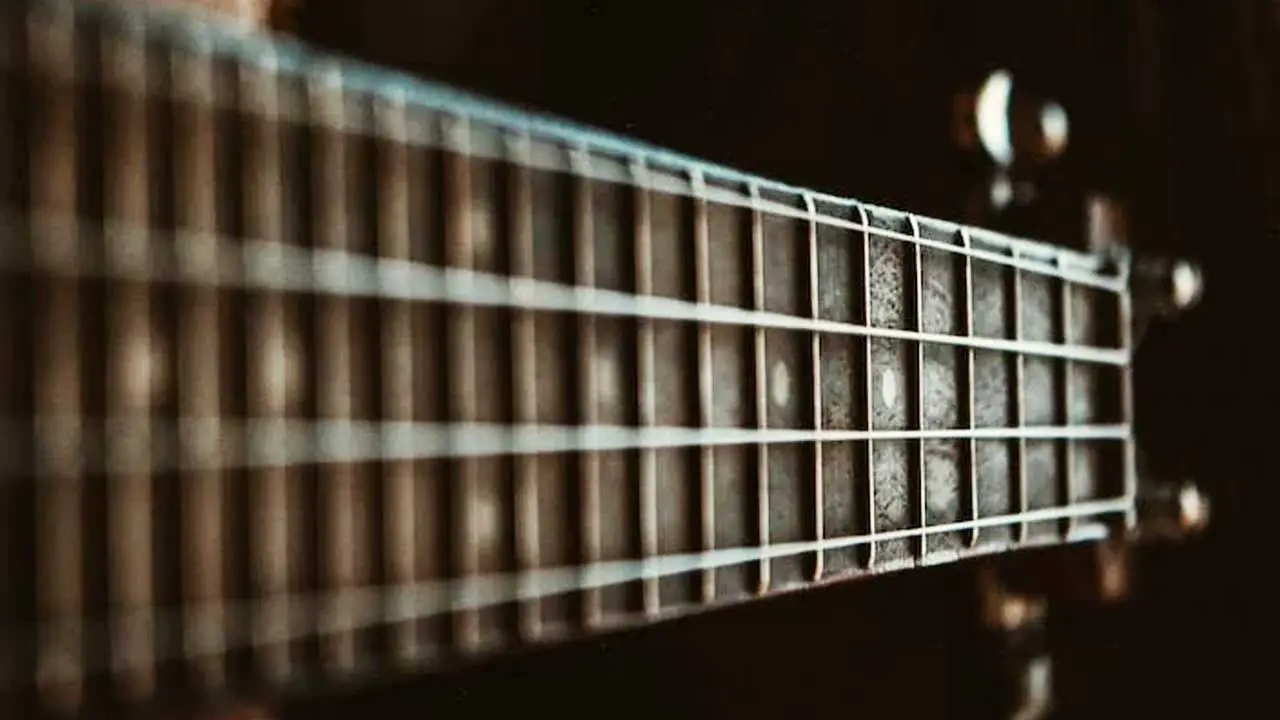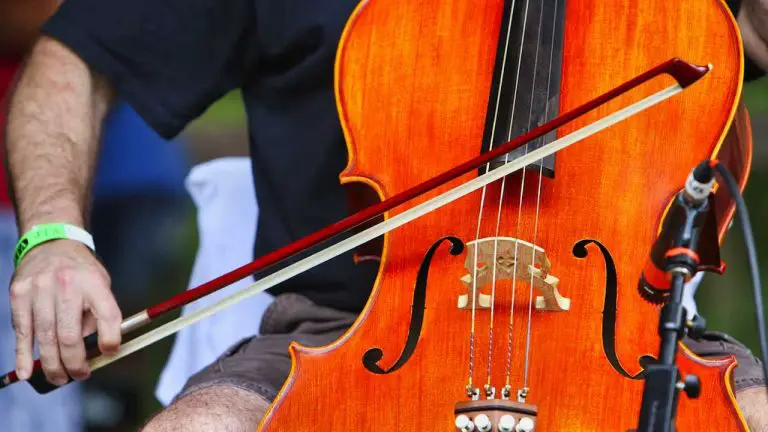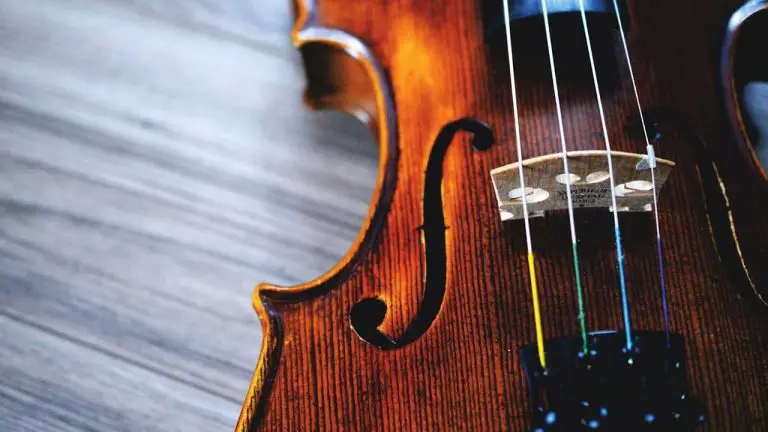What Are Stringed Instruments? Your Comprehensive Guide
Folkstrings.com is reader-supported. When you buy through links on our site, we may earn a small commission.
If you’re interested in music, you’ve probably heard of stringed instruments. These are musical instruments that produce sound by vibrating strings.
The sound that is produced can be amplified by the use of a resonating chamber or soundboard. Stringed instruments come in many different types and sizes, each with its own unique sound and playing style.
Some of the most common stringed instruments include the guitar, violin, cello, and bass. These instruments are played by plucking, strumming, or bowing the strings. The strings can be made from a variety of materials, including metal, animal gut, silk, or artificial materials such as plastic or nylon. The type of string used can affect the sound that is produced, as well as the playing style required.
Stringed instruments have a long history, dating back thousands of years. They have been used in many different cultures and musical traditions, and continue to be popular today. Whether you’re a beginner or an experienced musician, learning to play a stringed instrument can be a rewarding and enjoyable experience.
Table of Contents
What are Stringed Instruments?
If you’re interested in music, you’ve probably heard of stringed instruments. These instruments are a type of musical instrument that produces sound by the vibration of stretched strings.
Definition of Stringed Instruments
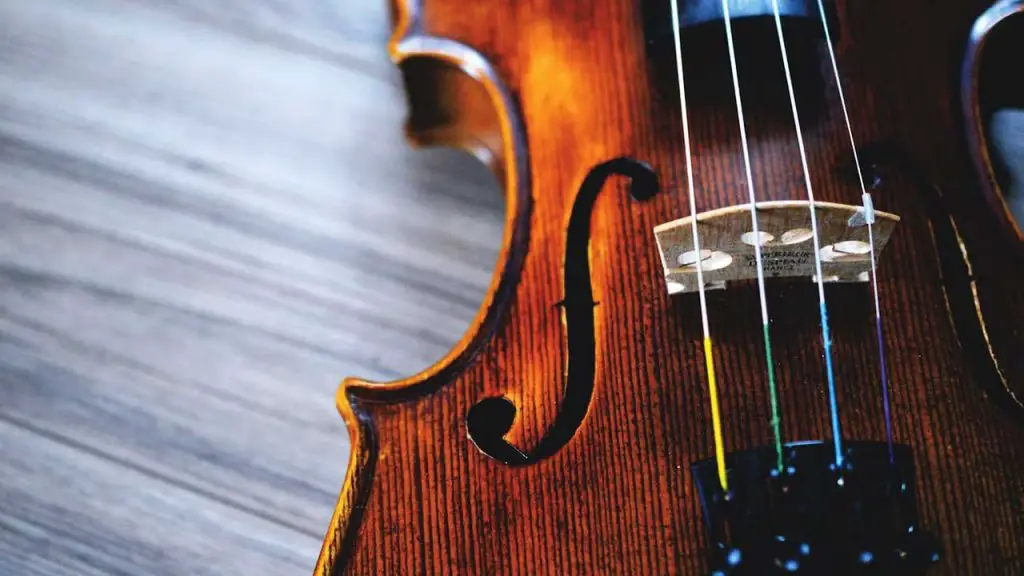
Stringed instruments are made of various materials such as vegetable fiber, metal, animal gut, silk, or artificial materials such as plastic or nylon.
In nearly all stringed instruments, the sound of the vibrating string is amplified by the use of a resonating chamber or soundboard.
The string may be struck, plucked, rubbed (bowed), or tapped to produce sound.
History of Stringed Instruments
The history of stringed instruments goes back thousands of years. The first stringed instruments were probably simple, single-stringed instruments made from materials such as animal gut, silk, or plant fibers. These instruments were used in ancient cultures for religious ceremonies, entertainment, and storytelling.
Over time, stringed instruments evolved and became more complex. The earliest known multi-stringed instruments were developed in ancient Mesopotamia around 2000 BCE. These instruments were the forerunners of the modern-day lute and harp.
As stringed instruments continued to evolve, new types of instruments were developed, such as the violin, guitar, and piano. These instruments have become an integral part of many different styles of music, from classical to rock, and continue to be popular today.
Types of Stringed Instruments
Stringed instruments can be classified into three main categories: bowed, plucked, and struck. Each category has unique features and produces a distinct sound.
Bowed Stringed Instruments
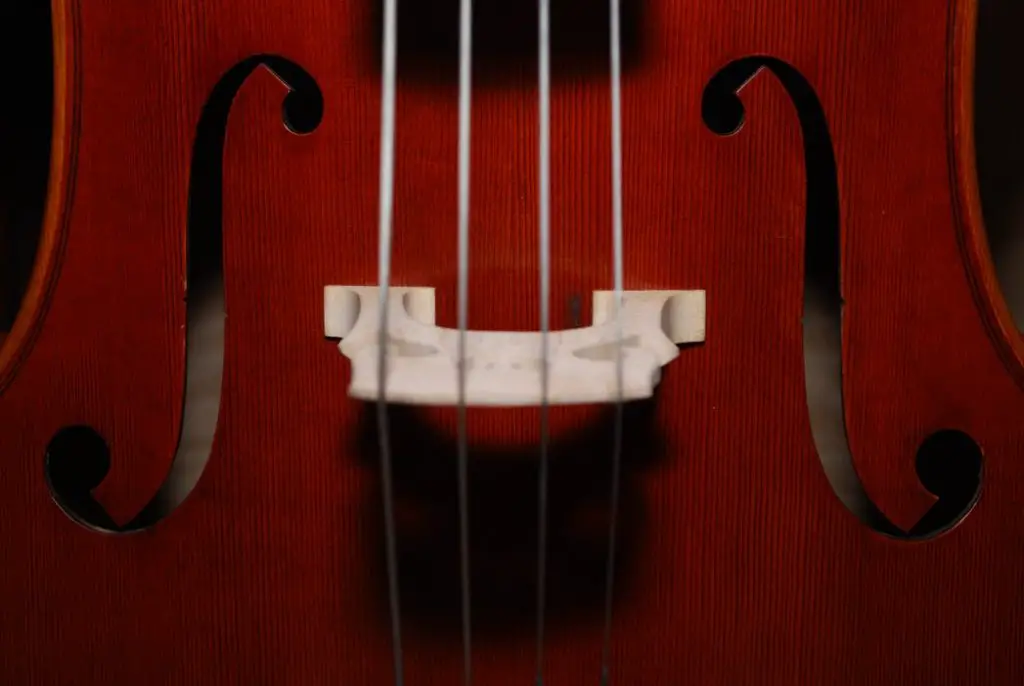
Bowed stringed instruments are played by drawing a bow across the strings. The bow is made of horsehair that is coated in rosin to create friction against the strings. Some common bowed stringed instruments include the violin, viola, cello, and double bass. These instruments are often used in orchestras and chamber music ensembles.
The violin is the smallest and highest-pitched of the bowed stringed instruments. It has four strings and is played with a bow held in the right hand. The viola is slightly larger than the violin and has a deeper sound. It is also played with a bow. The cello is much larger than the violin and viola and is played while seated. The double bass is the largest and lowest-pitched of the bowed stringed instruments. It is played standing up and requires a lot of physical strength to play.
Plucked Stringed Instruments
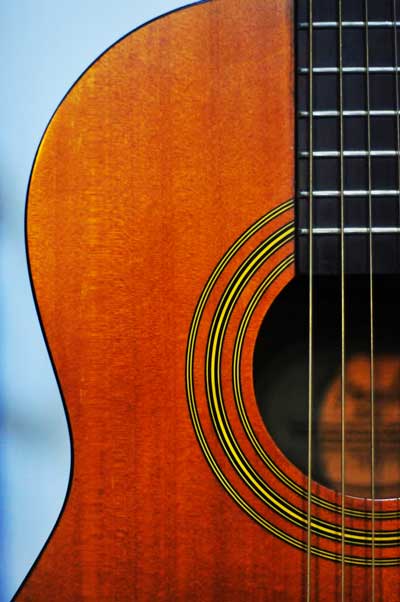
Plucked stringed instruments are played by plucking the strings with the fingers or a plectrum. Some common plucked stringed instruments include the guitar, ukulele, harp, and mandolin. These instruments are often used in popular music, folk music, and classical music.
The guitar is one of the most popular plucked stringed instruments. It has six strings and is played by strumming or picking the strings with the fingers or a pick. The ukulele is a small, four-stringed instrument that is often associated with Hawaiian music. The harp is a large, multi-stringed instrument that is played while seated. It is often used in orchestras and as a solo instrument. The mandolin is a small, eight-stringed instrument that is often used in bluegrass and folk music.
Struck Stringed Instruments
Struck stringed instruments are played by striking the strings with hammers or mallets. Some common struck-stringed instruments include the piano, harpsichord, and dulcimer. These instruments are often used in classical music and popular music.

The piano is one of the most popular struck-stringed instruments. It has 88 keys and is played by pressing the keys with the fingers. The harpsichord is a keyboard instrument that was popular in the Baroque period.
The piano is of course played by pressing the keys with the fingers, which causes small hammers to strike the strings. The dulcimer is a small, four-stringed instrument that is played by striking the strings with hammers.
How Stringed Instruments Work
Anatomy of a Stringed Instrument
Stringed instruments, as the name suggests, produce sound by the vibration of stretched strings. The strings may be made of various materials such as metal, animal gut, silk, or synthetic materials such as plastic or nylon.
In nearly all stringed instruments, the sound of the vibrating string is amplified by the use of a resonating chamber or soundboard. Stringed instruments consist of three main parts: the strings, the neck, and the body.
The strings are attached to the neck, which is a long, thin piece of wood that runs parallel to the strings.
The body of the instrument is the hollow part that surrounds the strings and the neck. The shape and size of the body can vary depending on the type of instrument.
How Do Strings Produce Sound?
When a string is plucked or bowed, it vibrates back and forth, creating sound waves that travel through the air. The frequency of the sound wave is determined by the length, tension, and thickness of the string.
The shorter the string, the higher the pitch of the sound. The tighter the string, the higher the pitch of the sound. The thicker the string, the lower the pitch of the sound.
The sound produced by the vibrating string is amplified by the body of the instrument. The vibrations of the string are transferred to the air inside the body of the instrument, causing the air to vibrate as well.
This creates a fuller, richer sound than would be produced by the string alone. In some instruments, such as the guitar, the sound is further amplified by the use of a sound hole. The sound hole is a small opening in the body of the instrument that allows the sound to escape.
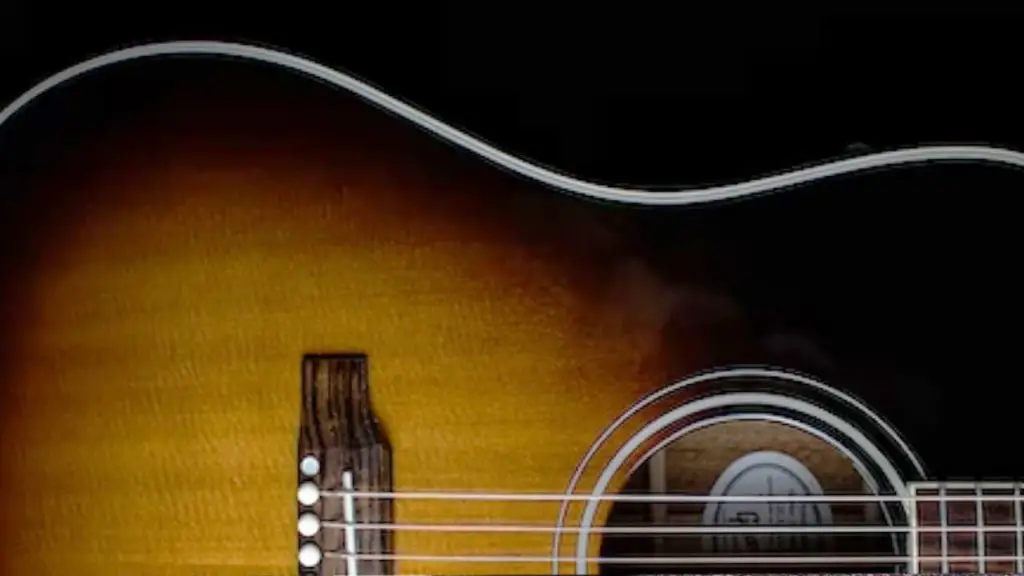
The shape and size of the sound hole can also affect the tone and volume of the sound produced. Overall, the design and construction of stringed instruments allow for a wide range of sounds and tones to be produced, making them a versatile and popular choice for musicians of all genres.
Famous Stringed Instruments and Musicians
Classical Stringed Instruments and Musicians
Classical music has produced some of the most famous stringed instrument players and pieces. The violin, cello, and double bass are some of the most popular classical stringed instruments.
Famous violinists include Itzhak Perlman, Joshua Bell, and Anne-Sophie Mutter. Yo-Yo Ma and Pablo Casals are well-known cellists, while Gary Karr is a renowned double bass player.
One of the most famous classical music pieces featuring stringed instruments is Antonio Vivaldi’s “The Four Seasons.” This composition features the violin as the lead instrument and is considered one of the greatest pieces of music ever written.
Other famous composers of classical music featuring stringed instruments include Johann Sebastian Bach, Wolfgang Amadeus Mozart, and Ludwig van Beethoven.
Contemporary Stringed Instruments and Musicians
Contemporary music has also produced some famous stringed instrument players and pieces. The guitar, bass guitar, and electric violin are some of the most popular contemporary stringed instruments.
Famous guitarists include Jimi Hendrix, Eric Clapton, and Eddie Van Halen. Jaco Pastorius and Flea are well-known bass guitar players, while Tracy Silverman is a renowned electric violin player.
One of the most famous contemporary music pieces featuring stringed instruments is Led Zeppelin’s “Stairway to Heaven.” This composition features the guitar as the lead instrument and is considered one of the greatest rock songs ever written.
Other famous contemporary musicians featuring stringed instruments include Prince, Carlos Santana, and Lindsey Stirling.
Stringed instruments have without a doubt played a significant role in music history, both classical and contemporary. From the violin to the electric guitar, these instruments have produced some of the most famous musicians and pieces of music ever recorded.
Conclusion
Now that you have learned about stringed instruments, you have a better appreciation for the unique sounds they produce. From the guitar to the violin, each instrument has a distinct character that makes it stand out from the rest.
Stringed instruments have been around for thousands of years and have played a significant role in the development of music. They have been used in various cultures and have evolved over time to produce new and exciting sounds.
Whether you are a musician or just a music lover, stringed instruments are a fascinating subject to explore. The next time you listen to a piece of music, take a moment to appreciate the intricate sounds that are created by the strings of these instruments.
Author Profile
-
Daniel Johnstone is an English writer with a love for stringed instruments from around the world.
He shares his love for these instruments through his writing for folkstrings.com, a website dedicated to all things related to folk string music.
Daniel's passion for music started at a young age, and he has since become an accomplished musician, playing guitar, cavaco, and recently, the harp.
His dedication to learning and sharing his knowledge of stringed instruments is evident in his insightful and engaging blog posts. Whether you're a seasoned musician or a beginner, Daniel's writing is sure to inspire and entertain you.
When he's not playing music or writing, you can find Daniel exploring new instruments and seeking out new sounds to share with his readers.
Latest entries
 AutoharpApril 4, 2024What Is the Autoharp Made Of: Exploring Its Materials and Craftsmanship
AutoharpApril 4, 2024What Is the Autoharp Made Of: Exploring Its Materials and Craftsmanship AutoharpApril 4, 2024Is Autoharp Easy to Play? Unveiling the Truth for Beginners
AutoharpApril 4, 2024Is Autoharp Easy to Play? Unveiling the Truth for Beginners AutoharpApril 4, 2024What Is an Autoharp Worth? Your Guide to Pricing and Value
AutoharpApril 4, 2024What Is an Autoharp Worth? Your Guide to Pricing and Value AutoharpApril 4, 2024Are Autoharp and Zither the Same Thing? Unraveling String Instrument Myths
AutoharpApril 4, 2024Are Autoharp and Zither the Same Thing? Unraveling String Instrument Myths
Affiliates:
This post may contain affiliate links that at no additional cost to you, the site may earn a small commission. We only recommend products we would use ourselves and all opinions expressed on this site are our own.
Accuracy Advice:
While we strive to provide up-to-date and accurate information, the content in this article may not reflect the most current research or medical guidelines. We encourage readers to do further research and consult with professionals for more personalized advice.
Our Recommendations:
The products and services mentioned in any of our articles are recommended based on our independent research and personal experience. We are not sponsored by any company. We aim to suggest products and services we believe are of high quality and could be beneficial to our readers.

